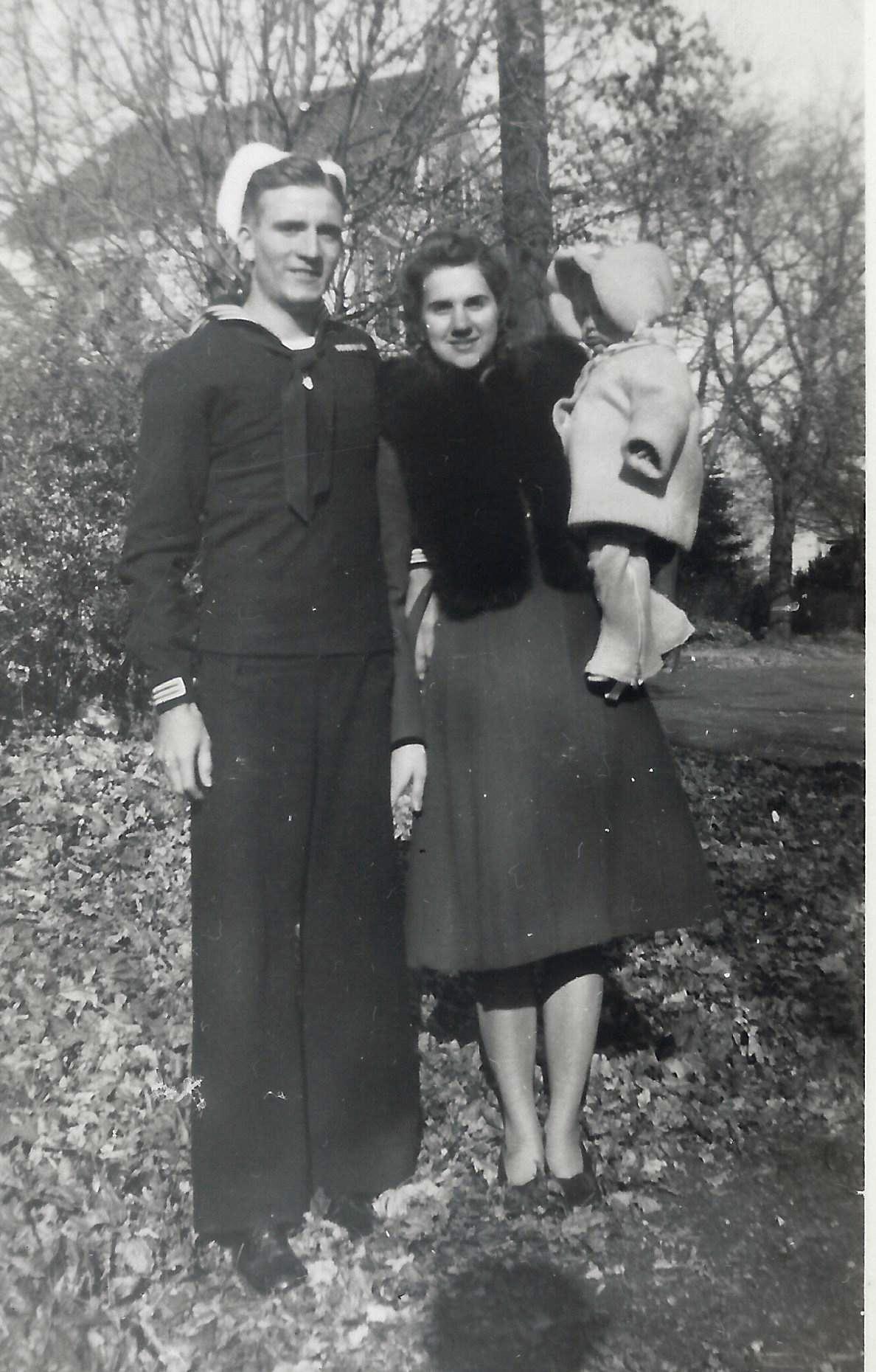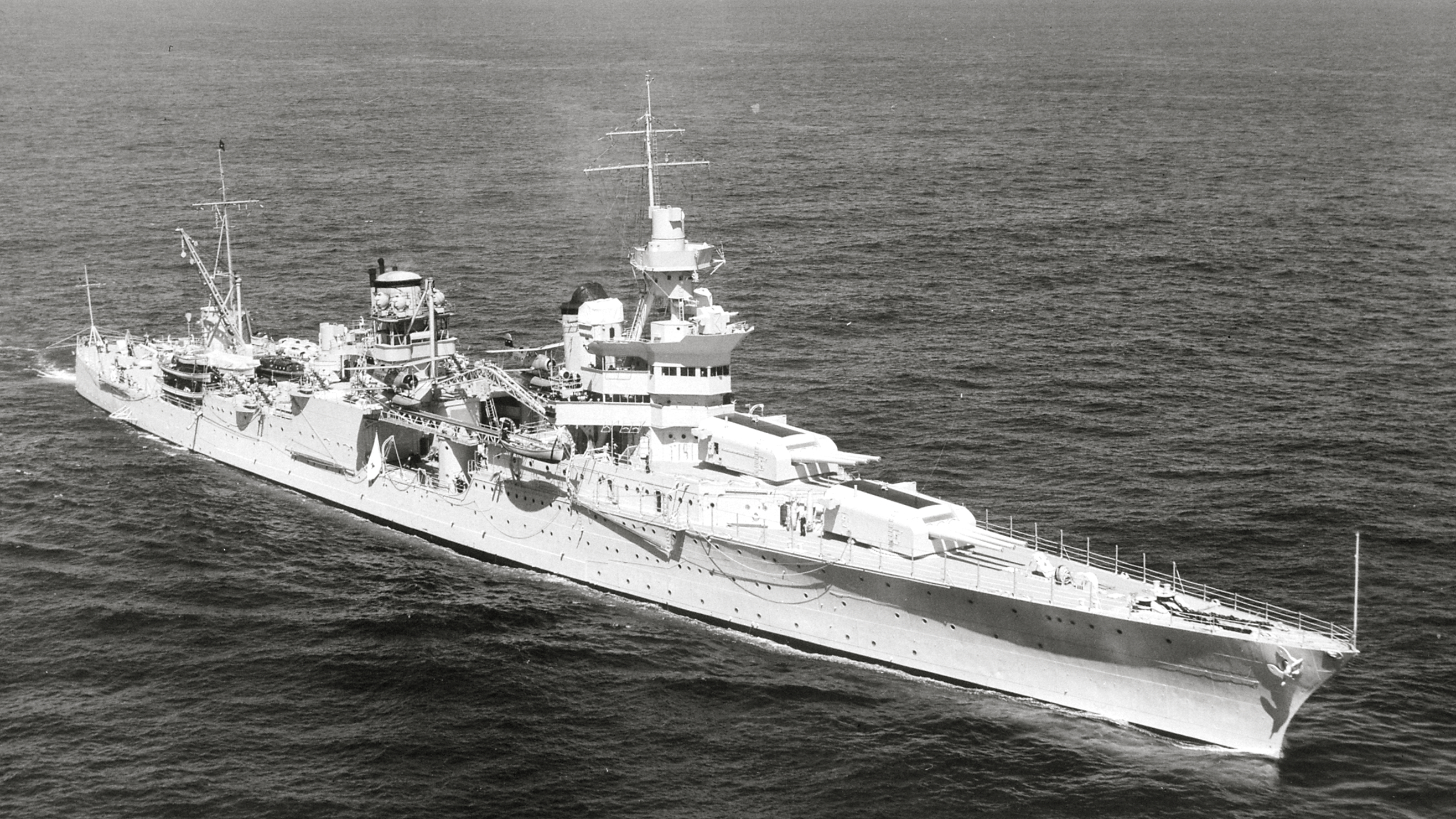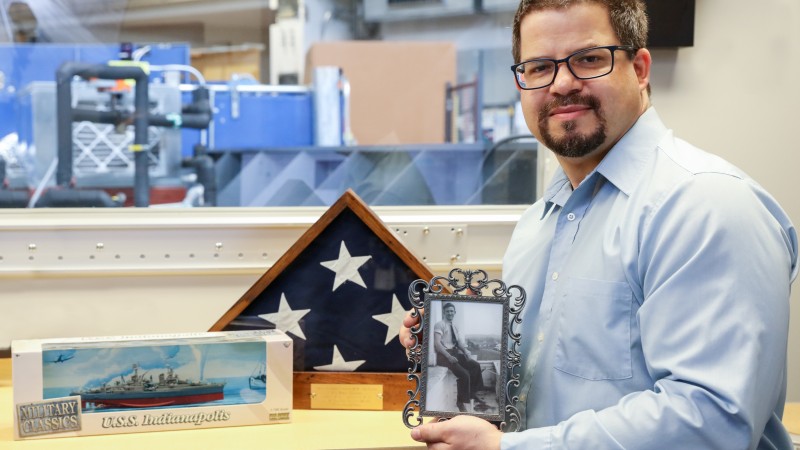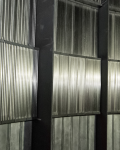The 75th anniversary of the final voyage of the USS Indianapolis and her brave crew is Thursday, July 30. The US Navy warship was on a top-secret mission across the Pacific Ocean to deliver war materials that marked the conclusion of the Manhattan Project.
The role of the Department of Energy’s (DOE’s) Oak Ridge National Laboratory (ORNL) in the Manhattan Project and throughout history is meaningful to many. But for one scientist, the sequence of events leading up to World War II, and the story of the Indianapolis is profound and personal.
Established as part of the Manhattan Project during World War II, ORNL—originally known as Clinton Laboratories—was constructed under cloak and veil in the “Secret City” of Oak Ridge, Tennessee.
After the war, the lab was rededicated to a mission of peace, and is today a premier research institution with a history of building world-leading facilities with cutting edge capabilities. Over the past 20 years, ORNL has been widely recognized for developing several of the world’s most powerful supercomputers.
But ORNL is also widely recognized for a history that stretches back much further—its history of neutron scattering.
Prelude to the nuclear age
Matthew Stone never got to meet his biological maternal grandfather. He died when Stone’s mother was still an infant. And yet—through his service aboard the USS Indianapolis—the heroic life of the man whom neither he nor his mother ever knew would not only shape their lives, but also play a pivotal role in changing the course of history.
Stone is a physicist at ORNL. He specializes in neutron scattering, a technique used to reveal the atomic structure and dynamic behaviors of materials with particles exhibiting bizarre and exotic quantum states of matter.
Neutron scattering is a research tool that provides atomic insights into materials used for advancing applications in energy, transportation, and medicine. Although it’s now used as a means of advancing the quality of life, the technique’s origins were developed in a time of peril and great uncertainty, to win a war.
As the world was confronting Hitler’s Nazi regime during World War II, physicist Ernest Wollan was in a secret laboratory in East Tennessee conducting research aimed at overpowering the fascists. His primary objective in the Manhattan Project was to study the effects of radiation and the use of neutrons to measure nuclear materials.
The goal of the Manhattan Project was to build the world’s first nuclear weapon—before Hitler could. To that end, three facilities were constructed on the Clinton site for producing and processing nuclear materials—facilities code-named K-25, Y-12, and the X-10 Graphite Reactor, where Wollan worked.
On July 16, 1945, in a test code-named “Trinity” led by J. Robert Oppenheimer at Los Alamos Laboratory, the first atomic bomb was successfully detonated in the New Mexico desert of Jornada del Muerto.
Promptly, President Harry S. Truman signed off on a top-secret mission to deliver parts of the “Little Boy” bomb overseas to a US Air Force base in the Philippines. The ship responsible for making the top-secret delivery was the USS Indianapolis, a battle-hardened heavy cruiser renowned throughout the US Navy.
Aboard the ship’s crew was 22-year old Machinist’s Mate Third Class Emerson David Luhman—Stone’s grandfather.
“Jiggs” Luhman and the USS Indianapolis
Born March 11, 1923, Luhman was 20 when he enlisted in the Navy. “Jiggs,” Luhman’s nickname since childhood, was a young man with many talents. In high school, he worked as a delivery man, delivering ice every day before and after school. He developed several loves, including photography, the outdoors, and a girl named Mattie, whom he married and lived with in northeastern Pennsylvania.

Emerson Luhman and spouse Mattie in 1944 with daughter Joyce—Matthew Stone’s mother.
(credit: Mattie Hudock)
After serving for two years, Luhman reached the rank of Petty Officer Third Class, working as a Machinist’s Mate aboard the USS Indianapolis. Typical duties of a machinist’s mate included operating and maintaining complex machinery such as the ship’s propulsion systems and environmental controls. It was a job that required an extensive understanding of the ship’s mechanics and how to repair all manner of parts, from pipes and valves to compressors and pumps, down to the very nuts and bolts.
The Indianapolis, a Portland-class heavy cruiser, was commissioned in 1932. From 1933 to 1941, the “Indy” was the flagship of the Navy’s scouting fleet, Scouting Force 1. After the attack on Pearl Harbor on December 7, 1941, it was reassigned to a task force responsible for seeking out Japanese carriers involved in the attack.
Over the next several years, the ship became increasingly more involved in fighting the Japanese forces. From the coast of New Guinea to the coast of Alaska, Indianapolis pummeled the opposition, shelling shore batteries, bunkers, enemy ships, and even enemy aircraft.

The USS Indianapolis displaced just over 10,000 standard tons, was 610 feet long and 584 feet wide. The ship’s propulsion system consisted of four giant Parsons steam turbines, powered by eight three-drum boilers that enabled a cruising speed of 33 knots (about 38 mph). In some sections, the ship’s heavy armor was as thick as 5 inches. It was outfitted with more than 40 guns—nine 8-inch 55-caliber guns; eight 5-inch 25-caliber anti-aircraft guns; two 3-pounder saluting guns; six quad 40-millimeter Bofors anti-aircraft guns; and 19 single 20-millimeter Oerlikon anti-aircraft cannons. (credit: US Navy photo 80-G-425615)
In March 1945, the ship pounded the southern beaches of Japan with heavy fire in the invasion of Okinawa. Indianapolis and the task force were met with resistance by enemy aircraft that attacked the American ships repeatedly. On the seventh day of the assault, a kamikaze Japanese fighter managed to break through the ship’s wall of anti-aircraft defenses.
Narrowly missing the ship’s stern, the enemy fighter crashed into the sea, but not before releasing its final bomb. The bomb struck, ripping straight through the rear deck, breaching several levels—down into the mess hall, past the fuel tanks, and through the other side of the hull. The underwater blast tore two large holes in the ship’s underbelly, causing massive damage that flooded several compartments. Nine crewmembers were lost in the exchange.
Indianapolis sustained severe damage to vital systems that might have been enough to sink other ships. Nonetheless, the crew, including Luhman, was able to make the necessary emergency repairs, enabling the ship to sail under its own power back to Mare Island Navy Yard off the coast of California to be refitted and await the next assignment.
From task force to top secret
Almost as soon as the results of the Trinity nuclear test were confirmed, Captain Charles McVay III was given a top-secret mission. The Indianapolis was to transport two mysterious crates across the Pacific to the Tinian island in the Philippines posthaste and completely alone.
Inside a small metal container was a large amount of highly enriched uranium from the K-25 and Y-12 processing plants. The larger wooden crate contained components for assembling the atomic bomb.
Chosen for her speed and reliability, Indianapolis achieved its mission once again, even breaking the record for fastest speed from San Francisco to Pearl Harbor in the process.
But sadly, most of the crew would never know just how important their mission was to the world.
On July 30, four days after delivering the cargo, Indianapolis—under orders to continue sailing without an escort—was struck by two torpedoes from a Japanese submarine. In less than 12 minutes, the entire ship and roughly 300 sailors, including Luhman, had disappeared.
Without rescue for four days, nearly 900 sailors fought to stay alive in oil-soaked, shark-infested waters with no supplies except waterlogged life jackets and a few rafts. Of the 1,195 crew members, only 316 survived. The event is the US Navy’s largest loss of life at sea.
The incredible story has been retold in movies and documentaries, even making a mark in pop culture for its reference in a famous scene from the 1975 movie Jaws.
The survivors were spotted by a Navy seaplane and rescued on August 2. On August 6, the cargo from their top-secret mission was aboard the Enola Gay B-29 bomber. Days later, the Japanese surrendered, and World War II was over.
A new mission
After the war, Wollan began using neutrons to study a wider range of materials for the common good. His friend and colleague Clifford Shull joined him in 1946, and together they pioneered the technique that is today used by thousands of researchers around the world. Their contributions to the field would garner the 1984 Nobel Prize in Physics.
In more ways than one, Stone’s path was paved by giants, whose service to their country changed the world forever.
“I remember being told the story about my grandfather and the Indianapolis when I was about 8 years old,” said Stone. “But I didn’t start making the connections to the history of Oak Ridge until about 4 years ago during the rededication ceremony of the Shull-Wollan Center, when the historic letter was presented in which Ernest Wollan wrote in 1944 to lab director Richard Doan, requesting funding for neutron experiments at the Graphite Reactor.
“When I saw the letter, it clicked. My scientific research relies on a technique that was developed out of the Manhattan Project that my grandfather was a part of. In a way, I’m using the plowshare and my grandfather helped deliver the sword.”
Like his grandfather, Stone also serves on a flagship. He is an instrument scientist on SEQUOIA, one of 20 high-powered instruments at the SNS facility. Operating at 1.4 megawatts, SNS is enabled by a linear accelerator roughly two football fields in length, very similar in size to the USS Indianapolis, but with more modern complexities.
Instead of shells, the accelerator shoots particles, bombarding samples with blasts of neutrons 60 times a second. The energy created by the accelerator is roughly equal to the detonation of a stick of dynamite with each pulse.
Not surprisingly, Stone was interested in engineering early in his education. However, it was physics that put him on his path to neutron scattering.
“I like the integrity of science. I decided to go into physics because I thought it’s kind of at the heart of engineering,” he explained.
Stone was first introduced to neutron scattering at the NIST reactor in Gaithersburg, Maryland, while attending graduate school at Johns Hopkins University.
“The first neutrons I scattered was around 1997,” Stone said. “At the time I had no idea the path I was on. I suppose I did read the book The Making of the Atomic Bomb by Richard Rhodes, so I knew about Oak Ridge, but I still didn’t know about the significant role Oak Ridge had in terms of neutron scattering.”
Fast forward about 10 years and Stone finds himself working as a postdoctoral researcher at Oak Ridge lab’s 85-megawatt HFIR reactor, one of the most powerful research reactors in the world. Construction of the SNS—DOE’s newest neutron scattering flagship facility—was completed just the year before. Not long after, Stone earned a permanent position at SNS and has been working there ever since.
Neutrons and an invisible enemy
Much like his grandfather, today Stone finds himself aboard his own vessel fighting another world war, but this time against an unseen foe.
“After watching reports on the news about potential drugs being tested, I realized we could use neutrons to study how the small molecules currently being considered for drugs to treat the virus interact with water,” said Stone. “In my research, I most often use neutron spectroscopy to study magnetic behavior, but we can also apply this tool to investigate how well certain molecules bind to or inhibit the virus by looking at their atomic vibrations.
“The more we understand about how therapies interact with water and the virus, the more likely we can find the right drug to treat COVID-19.”
In March, ORNL researchers at HFIR and SNS diverted nearly all their resources into fighting COVID-19, the deadly pandemic that has infected more than 16 million people to date worldwide.
Stone keeps a scale model of the USS Indianapolis in his office to remind him of the sacrifice his grandfather made when the world needed him the most. Now, it also keeps him focused on the task at hand as the national laboratories combat the novel coronavirus.
SNS and HFIR are DOE Office of Science User Facilities. UT-Battelle LLC manages ORNL for the DOE Office of Science. The Office of Science is the single largest supporter of basic research in the physical sciences in the United States and is working to address some of the most pressing challenges of our time. For more information, please visit http://science.energy.gov/.—by Jeremy Rumsey







